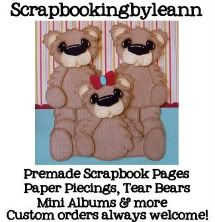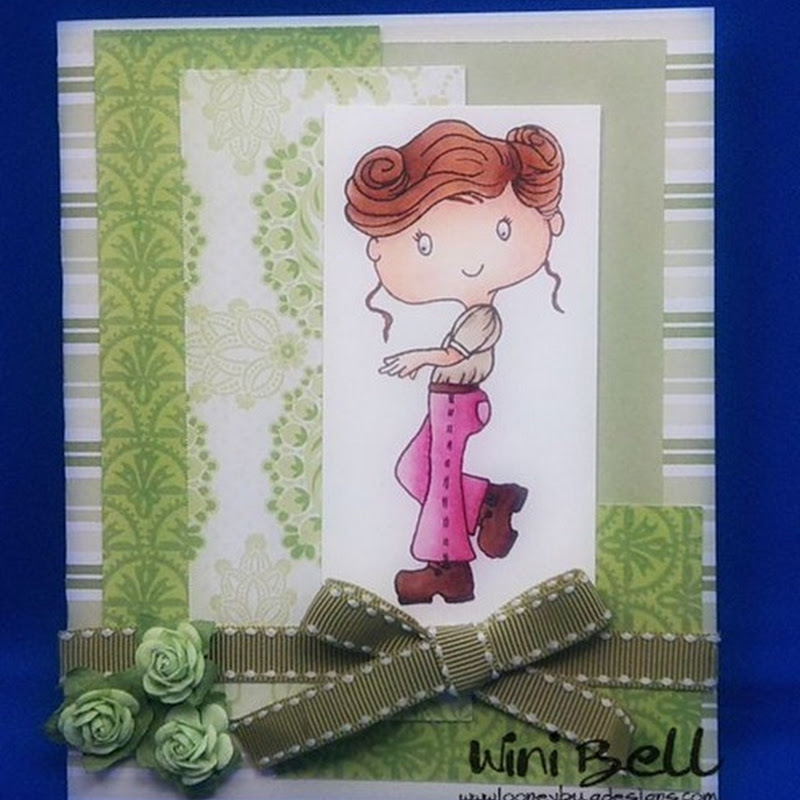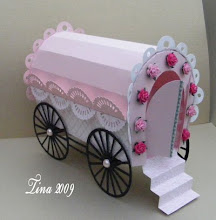here are a few tips you can apply, no matter what type of ink is in a pad you are considering buying: First, buy ink pads whose inking surface is NOT flush with the plastic casing. You will want *raised* ink pads, meaning that the inking surface will be elevated from the plastic base. The reason for this is when you are working with a stamp larger than the inking surface, you will not be able to completely ink up the surface with a piece of plastic casing in the way. If your inking surface is raised, you can move the stamp about freely, or place the stamp face up on your table and "stamp" the inkpad all around the rubber surface of your image to ink it up. In the event of this scenario, it would also behoove you to have an inkpad with a removable lid. Remember also that just because the inkpad is hinged, does not necessarily mean that the lid is not removable. The inkpads I own are an example of this case--the tops easily pop off with a slight squeeze of the lid. I feel I get the best of two worlds with this type of inkpad. On the one hand, because of the hinged lid, my lid is not going to fall off if I toss it in a drawer, it won't get buried under my paper piles as I am stamping and it won't get ink on the lid when trying to put it back on straight (which inevitably smears on my fingers and on my cards). On the other hand, with the removable aspect of the hinged lid, if I feel the lid is in my way, it is easily removed and then snapped back into place. The second major criteria for me when purchasing ink pads is that the pad should be re-inkable because I don't want to have to buy a new stamp pad every time that particular color gets a bit dry.
Inkpads can come in one single color, or they can have a variety of colors in the same pad. The latter is usually referred to as a "rainbow" pad, although the color scheme used may be very different from that found in a rainbow. With that said, let's take a foray into some specific types of inks used in ink pads...
DYE INKS (WATERBASED)
(Stampin’ Up! Classic Ink Pads are an example of dye inkpads ~
EXCEPT Black! Marvy Matchables are also waterbased dye ink)
This will probably be the type of ink in the first stamping pads you will use. It is general purpose ink for stamping on paper. Dye inkpads come in a variety of sizes, as well as inking surfaces--including felt, linen and sponge. This waterbased dye ink may be used on most any type of paper and, most conveniently, has a very quick drying time. The nature of the dye inks is such that they soak in and stain the fibers of the paper. Many of these inks are manufactured to be acid-free, but do tend to fade with time and especially sunlight if your stamped item is not treated with a special UV fixative to help impede that process. They also may run if in contact with water or used in conjunction with water based mediums such as markers to fill in detail areas. These may be important considerations to keep in mind if your rubber stamp art is mainly going to be expressed in scrapbooking.
If you are looking for a waterbased dye ink rainbow pad, I suggest you purchase one with the newest technology, meaning a case that actually separates the individual colors of ink on their own small ink pad (Kalidacolor pads and Stampin’ Up! Spectrum pads have this type of inkpad). These pads are simply pushed together with the flip of a button to use for a graduated color effect in stamping. The lids of these pads will not close unless that special button separating the individual inkpads has been engaged. This means that while you are storing your rainbow inkpad, the colors will not intermingle and become "muddy". It also means that you can re-ink each separate color as necessary. And, it also means that you in fact have a number of small stamp pads in one because if you separate the individual inkpads you can ink up a small stamp with a single color. They're pretty cool.
Waterbased dye inks are easily cleaned from your stamps with water. Some stampers like to use damp paper towels or baby wipes to dab the ink off.
WATERPROOF INK PADS (DYE-BASED)
(Stampin’ Up!’s Black inkpad is an example of dye-based waterproof ink, so are the Memories inkpads)
This type of ink is dye-based, unlike the inks described above. Because of this feature, these inks, once dry, will not run with water. Some of these inks are also manufactured acid-free and may be preferred for their waterproof quality in scrapbooking. This type of inkpad is especially helpful in conjunction with particular stamping techniques. Two, which come to my mind, are watercoloring or coloring in an outline type of image with waterbased markers. Hence, you may see these labeled as a "watercolor ink pad" or an "outliner" pad. In either case, an image may be stamped down, allowed to dry, then may be worked over with watercolors or waterbased markers to color in detail--without smudging the originally stamped image. I find I only need one of these watercolor-type pads myself, and it is the black one. Some disclaimers: I have heard differing accounts of this type of ink turning to an off-color when in contact with certain glossy papers, or with cold laminate adhesive. Also, on some coated or glossy papers, the waterproof ink doesn't seem to dry completely, even if heated air is applied, and will smudge either when touched or in contact with moisture, as from waterbased markers. Keep those things in mind and experiment with paper types and adhesives used when working with your waterproof inkpads, especially before replicating an item in quantity. A final note...because of the dye-based waterproof qualities of this type of ink, it is more difficult to clean off of your stamps. A solvent based cleaner is needed to most successfully remove this ink from the rubber. AND, although the ink is "waterproof", it is NOT classified as permanent and is not suitable for certain applications such as fabric stamping or stamping on shrink plastic.
PIGMENT INK PADS
(Stampin’ Up!’s Craft Ink Pads, Colorbox, Brilliance, Inkcredible, Encore and VersaMark are examples of this type of ink)
This type of ink is suitable in a variety of stamping situations. Pigment ink is thicker than a water-based or dye-based ink and is best distributed from a spongy pad. When pigment ink is stamped on a surface, it does not soak in and stain, but rather dries on top of that surface. If you stamp on regular non-coated paper with pigment ink, it will take a little more time to dry than the previously discussed inks, but the color will also remain on the surface, appearing more vibrant. Some stampers like to use a heat gun to thoroughly dry pigment ink stamped image on non-coated paper and watercolor over that since it will not smear. On coated or glossy paper, however, pigment ink does NOT dry. I don't know the precise mechanics of this, but just remember that pigment ink, plus a glossy or coated surface, equals ink that will never dry. "But what if you wait overnight?" you ask..."What if I wait a month???"...you inquire...forget it. Stampers have tried it. But here is the really great side of this unique factor: if you have an ink that will remain wet, you can apply special powders to the ink, which, when heat activated will provide an adhesive and drying quality to the ink--the most popular of these powders is embossing powder. Embossing is so big it is a topic all its own...so let me know if you need more information on that.
Rainbow pads are also available in pigment inks, and since the ink is so thick, the colors will not mix and muddy when stored in contact like the dye ink rainbow pads. There are even pigment rainbow pads whose container is made so that each individual color will actually snap out so that you may use it alone, or, you can rearrange the colors in the container to represent a different graduation of colors. Because of the thickness of pigment ink, it is a little bit more difficult to clean it off your stamps, but it does come off with water. You may, however, want to use a toothbrush or a stamp cleaning pad for ease in cleaning the crevices.
EMBOSSING PADS (Any pigment ink or embossing ink)
These pads are made like the pigment pads, but come in clear or tinted (either faint blush or very pale blue) "ink". They are obviously not used for their own color, but rather just provide that wet base necessary for a medium such as embossing powder to adhere to a surface. The tinted pads are more helpful than the clear pads in seeing where your image has been stamped down. However, there are some special techniques where the clear embossing pad is necessary to create a certain look. If you want more information on these techniques, let me know!
FABRIC & CRAFT INK PADS (Stampin’ Up! Craft Inkpads, Fabrico & ColorBox Crafters Ink are also used for fabrics and other mediums. Considered pigment ink, some must be heat set to become permanent)
These are inks of a pigment ink consistency that may be used for the same things pigment inkpads and embossing pads are used for, but they have an added bonus. When heated, these inks become permanent. This is especially useful for fabric and wood stamping. A special feature you can take advantage of when fabric stamping with these craft inks is that if you make a mistake you can't stand, you may launder your item if it has not yet been heat set and that will remove the ink!
PERMANENT INKS (These are solvent based inks and need a special cleaner. Examples are Staz-On, Zim Ink, Décor-it, 123 Ink & Feista. Permanent on wood, walls, plastic, shrink plastic, glass, metal & paper)
These inks are considered permanent once dry, and do not require a heat setting. They will definitely stain your stamps, and can be hard to clean off even with a solvent cleaner.STORING INK PADS
I suggest storing your inkpads upside down so that when you want to use them, the ink will have sunk to the top of the pad and you will have a nice wet surface for inking up your stamp. Because of this storage method, I index the bottom of my inkpads if the original packaging has not done that already. I like to run out return address size labels with the name of the color, and stamp a small image in that color ink on another label to place below the name. This way I can dig through my inkpads while they are upside down, looking either by color name or the shade on the sticker to choose the one I want to work with.
Some folks store their inkpads in a shoebox, some in plastic containers or drawers--but a really neat idea is to store them on the wall in a cassette tape storage unit. You can stamp a small dot next to each inkpad's slot (with the eraser of a pencil) to show the color and perhaps use a fine tip permanent marker to write the name of the color on the side of the inkpad's case that faces out. This will help free up your precious desk space for other stamping supplies!
USING YOUR INK PADS
I bet you thought I'd never get to this part! Well, using the inkpads is really the easiest part. First, always make sure your stamp is clean before you ink it up or you may end up with a new shade to an inkpad. It is also important to get any fuzz, fluff, strings, glitter, etc. off the stamp, as these will ink up right along with the rubber of your stamp and leave unsightly traces or blank spots on your stamped image. To thoroughly ink up an image, I first twist my stamp on my inkpad about 3 times, then tap my stamp on the inkpad about 3 times. Then, LOOK at the rubber image. Even if you are using a light shade of ink, you should still be able to see the moisture of the ink covering the surface of the image. If the image is not thoroughly inked, just repeat the twists and the taps until it is. Place your inked stamp straight down on a piece of paper, push down on the top of the stamp to ensure that all of the rubber image has made contact with the paper, then lift straight up. Remember to clean your stamp before inking it up in a new color. Now, go stamp, scrap, alter & create up a storm!



















































































































































2 comments:
Hello everyone!
I would like to burn a theme at this forum. There is such a thing, called HYIP, or High Yield Investment Program. It reminds of ponzy-like structure, but in rare cases one may happen to meet a company that really pays up to 2% daily not on invested money, but from real profits.
For quite a long time, I make money with the help of these programs.
I don't have problems with money now, but there are heights that must be conquered . I make 2G daily, and my first investment was 500 dollars only.
Right now, I managed to catch a guaranteed variant to make a sharp rise . Visit my web site to get additional info.
http://theinvestblog.com [url=http://theinvestblog.com]Online Investment Blog[/url]
Hi everybody!
For sure you didn’t here about me yet,
friends call me James F. Collins.
Generally I’m a venturesome gambler. all my life I’m carried away by online-casino and poker.
Not long time ago I started my own blog, where I describe my virtual adventures.
Probably, it will be interesting for you to read my notes.
Please visit my web page . http://allbestcasino.com I’ll be glad would you find time to leave your opinion.
Post a Comment